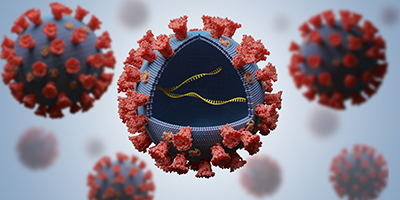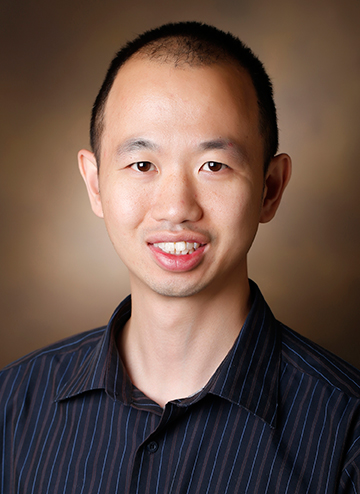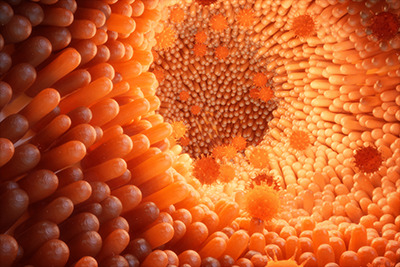Author
Possible COVID-19 “decoy”
Oct. 22, 2020—Oct. 15, 2020, 10:00 AM by Bill Snyder The novel coronavirus, SARS-CoV-2, must bind to the cell surface receptor ACE2 to enter cells and cause infection. Recently a preclinical study by an international research team found that the presence of a recombinant soluble form of human ACE2 reduced viral growth and inhibited infection. This raises the possibility that ACE2 carried...
Vanderbilt researchers develop publicly available COVID-19 animal susceptibility prediction tool
Oct. 8, 2020—by Marissa Shapiro Oct. 6, 2020, 9:00 AM A Vanderbilt team of experts in virology, genetics, structural biology, chemistry, physiology, medicine, immunology and pharmacology have together developed technology to understand and predict animal susceptibility to SARS-CoV-2, the scientific name for the strain of coronavirus causing COVID-19 providing evidence that horses and camels may be at...
Chuck Sanders named Protein Society President
Sep. 18, 2020—Dr. Charles R. Sanders is Professor of Biochemistry, holder of the Aileen M. Lange & Annie Mary Lyle Chair in Cardiovascular Research, and Associate Dean for Research in the Vanderbilt University School of Medicine Basic Sciences. Dr. Sanders is interested in determining the molecular biophysical mechanisms by which defects in membrane proteins contribute to human...
VIR-CLASP reveals new insights into cellular mechanisms of viral immune response
Sep. 10, 2020—By Brad Davidson RNA viruses invade cells and co-opt cellular machinery to replicate and translate their genomic material. To stave off infection until immune cells arrive, host cells rely on “intrinsic immunity factors” such as proteins already present within the cell. Through the rapid binding of intrinsic immunity factors, host cells might prevent a virus...
Study explores the role of MYCN in Triple Negative Breast Cancer diagnosis and treatment
Sep. 10, 2020—By Mary Alice Keller The oncogene MYCN regulates cancer cell growth, proliferation, metabolism, and survival; tumors with increased MYCN expression are more aggressive. MYCN usually occurs in neuroendocrine tumors but can also occur in tumors of the reproductive system, including the prostate and ovaries. A Science Translational Medicine paper published earlier this year details new...
Assembling cell power plant machinery
Sep. 3, 2020—Sep. 3, 2020, 11:00 AM by Leigh MacMillan Mitochondrial complex II is a four-subunit protein machine located in the mitochondrial membrane that links two essential cellular energy-producing processes. Defects in complex II — because of mutations in the genes encoding the subunits or incorrect assembly of the mature complex — are associated with severe disease...
Chuck Sanders named president-elect of The Protein Society
Sep. 3, 2020—The Protein Society is governed by elected officers and an Executive Council. The officers are President, Secretary/Treasurer, and President-Elect. The President acts as the Chair of the Executive Council, which meets twice annually to vote on Society business and plan Society activities. Dr. Charles R. Sanders is Professor of Biochemistry, holder of the Aileen M....
Non-neutralizing antibodies from a Marburg infection survivor show therapeutic potential
Aug. 29, 2020—By Sohini Roy Marburg viruses cause a hemorrhagic fever in humans, with a fatality rate of up to 90 percent. Currently, Marburg disease can neither be prevented by a vaccine nor therapeutically treated. Understanding how the immune system of a MARV survivor reacts against the virus can yield clues to design a treatment. With this...
Vanderbilt research shows stimulating tuft cell production reverses intestinal inflammation
Aug. 28, 2020—by Marissa Shapiro Aug. 28, 2020, 9:00 AM Researchers at Vanderbilt University have, for the first time, been able to trigger the specific immune system response required to reverse the course of small intestinal inflammation by inducing production of tuft cells, very rare epithelial cells that sense and respond to parasites. The breakthrough has the...
Vip1 allows cells to adapt to changing conditions
Aug. 28, 2020—By Francisco Rodriguez The class of signaling molecules known as inositol diphosphates or PP-IPs affects cellular shape, nutrient sensing and many other biological processes among organisms as simple as yeast and as complex as mammals. PP-IP levels—and thus their signaling power—within a cell depend on the activity of kinases, which create PP-IPs by adding a...








